Blog home / Top authentic indigenous experiences in Australia
From bush tucker samplings to cultural conversations, a smoking ceremony to exploring hidden rock galleries, these active travel experiences provide a cultural platform for a beautiful exchange as you learn about Indigenous Australian history.
As you delve into their stories and heritage on our immersive adventures, our wilderness guides and Indigenous guests offer a deeper understanding of the need to conserve their culture and respect their place and lifestyle.
These top 11 experiences provide a genuine insight into the Aboriginal peoples' continuing connection to the lands and communities across Australia.
Follow a 'Dreaming Pathway' or songline on the Jatbula Trail
A culturally significant area, the Jatbula Trail follows a songline that has many dreaming story crossroads. The trail is named after Peter Jatbula, a traditional owner who fought hard for the area to be returned to the Aboriginal people in the 1970s and 80s.
Tracing ancient passages, the hike through the exceptional Arnhem Land escarpment and Stone Country in the Northern Territory is elevated as you visit ancient rock art sites, which bring to life the Dreamtime stories handed down through the generations.
Interesting sites include the Jawoyn Aboriginal rock art hidden in the many stony outcrops and overhangs en route to Crystal Falls. You also explore the Amphitheatre, which is a rainforest gorge, with its rock shelters exhibiting the art of the Jawoyn Traditional Owners.
Admire a secret Aboriginal cave along the mighty Franklin River
The Kutikina Cave is a Tasmanian hidden gem found in the Lower Gordon River. The rock shelter is considered one of the most important archaeological finds in Tasmania – and in Australia – relating to human occupation in the Pleistocene era.
Only discovered in 1977, the limestone cave was one of the richest artefact deposits. It contained Aboriginal artefacts and deposits that marked the most southerly migration of humans during the last ice age, with evidence of wallaby hunting at the time. Its discovery was also one of the reasons that led to the historic demise of the plan to dam the Franklin River.
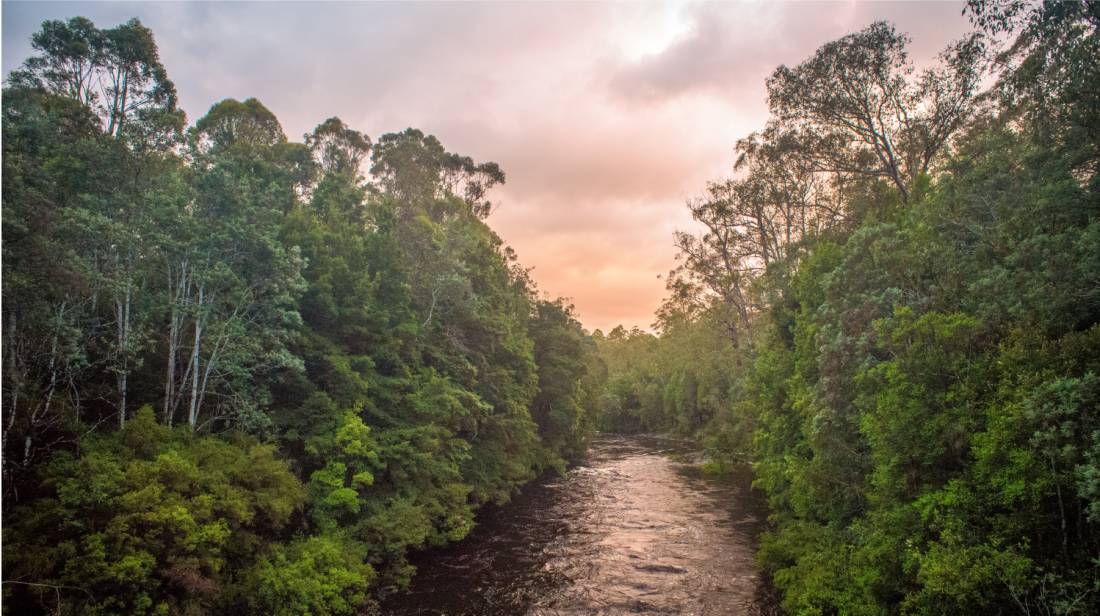
On our rafting expedition, travellers pass this cave with our guide explaining the significance of the site.
In respect to the community's wishes, we do not step foot inside the cave as there are mixed opinions as to whether non-indigenous people should be entering it.
Taste authentic bush tucker in the Red Centre
Ever tried bush muesli? Well, there are plenty of unique bush foods on the menu on our Central Australian trips.
On our Classic Larapinta Trek in Comfort, local Indigenous specialist, Rayleen Brown leads a cultural talk and presentation along with a bush food platter that showcases a range of dukkhas, native herbs and spices, bush tomato and more.
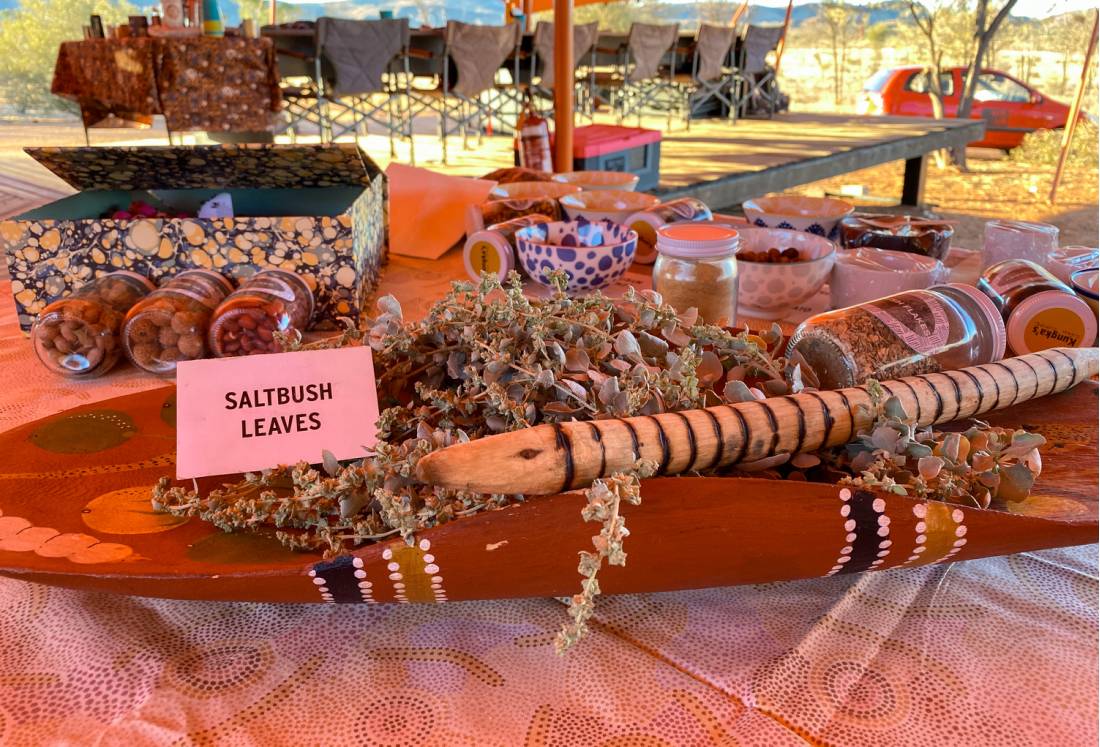
The meals served on our Northern Territory tours are sometimes based around the bush foods that she supplies, such as Lemon Myrtle Chicken.
Marvel at hidden rock art galleries in the Top End
In addition to the rock art found on the Jatbula Trail, Kakadu National Park offers an array of hidden rock art, which recount ancient stories, lore and songs significant to Indigenous Australian culture.
Coupled with the vast landscapes and rich wildlife, a visit to these rock galleries adds a unique element to your hike. Over 40,000 years of Aboriginal heritage of both the present and past is on display in the Top End.
Joining a guided walking or cycling tour allows you to easily find these harder-to-get-to galleries and gain a deeper understanding of the local culture, with our insightful tour leaders strongly focused on highlighting its importance.
Pay respects to those lost during the Wybalenna ‘Aboriginal Settlement’ on Flinders Island
A visit to the fascinating Flinders Island Museum and the historic Wybalenna is a must when on this Tasmanian island, which is a short 35-minute scenic flight from Launceston.
The infamous site of Wybalenna reverberates a sad history about the disastrous indigenous resettlement scheme back in 1834. Wybalenna is where Tasmanian Aborigines were transported after the 'friendly mission'; that is, the mission to round up and remove Aboriginal people from mainland Tasmania.
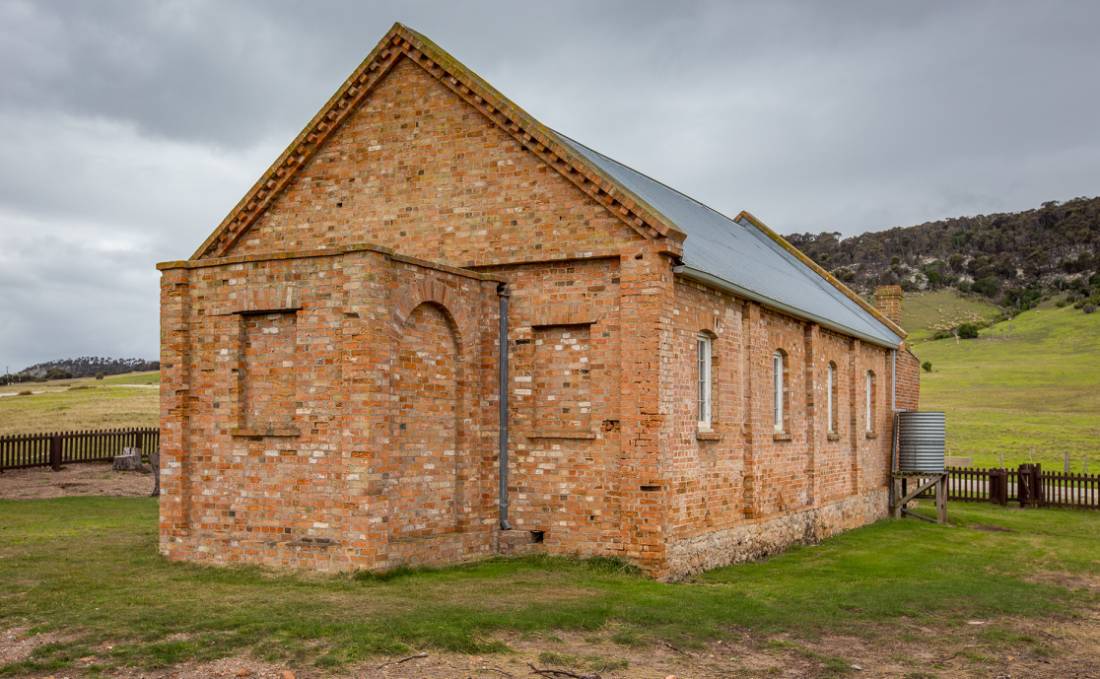
While the remaining graveyard, housing and chapel are a heavy and melancholic sight to take in, it is an important and historically significant place to learn about.
Our guides take care to make sure information presented here is accurate and sensitive and visitors are then taken to the local museum nearby where they are given the chance to learn more about what happened there.
Experience the magic of the Standley Chasm still run by Traditional Owners
A sight to be seen, the beautiful Standley Chasm is just outside the West MacDonnell Ranges National Park and is a private reserve proudly owned and operated by its Traditional Owners as part of the lwupataka Land Trust.
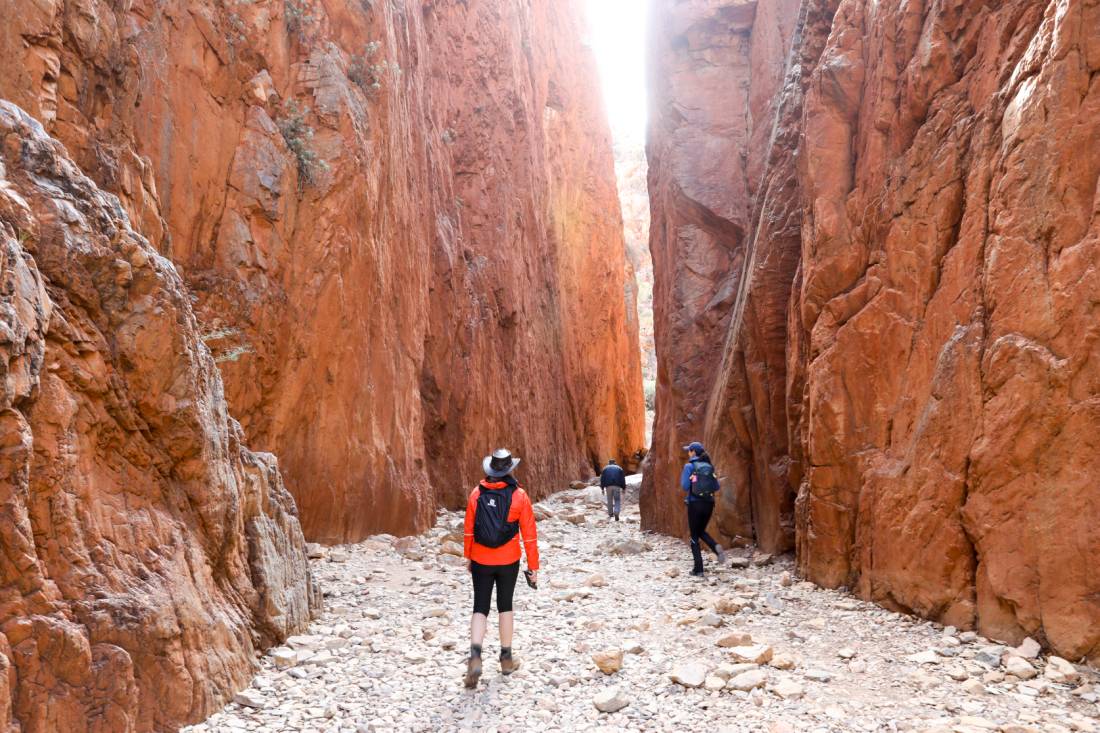
A cultural conversation is led by one of their local guides on our Larapinta walking holidays, where you learn about the site’s significance, being one of the areas where Aboriginal land has been passed back to them.
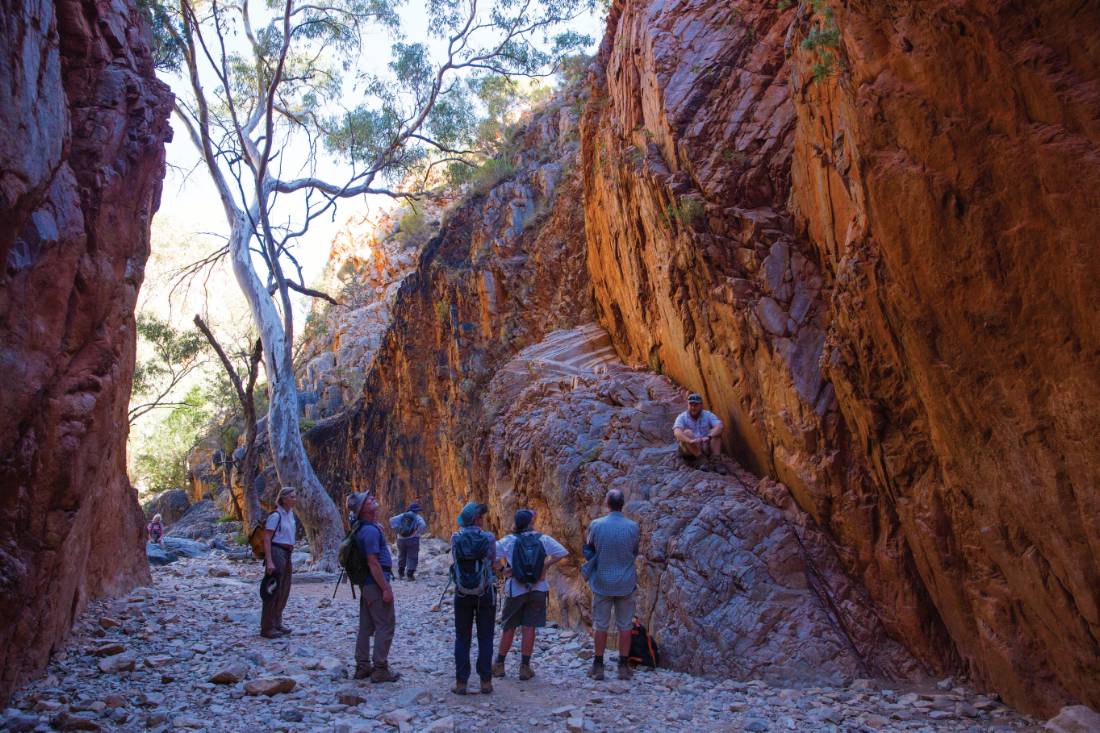
Also known as Angkerle Atwatye to the local Indigenous people, the site's rocky slopes rise an astonishing 80 metres above the chasm, which has been carved out over millions of years by a tributary of the Finke River system – purported to be the oldest river in the world.
There are even opportunities to immerse with the land by camping overnight on our trips, such as the Best of the Larapinta Trail and the Larapinta End to End, for a truly magical experience to connect with the ancient land.
Visit original ochre sources used in ceremonial rituals
As you explore the fabulous beaches of Maria Island, visit the ochre pit at Bloodstone Point – one of the original ochre sources for the Tasmanian Aborigines.
The natural earth pigment used by Aboriginal people for thousands of years is a fundamental part of their life and culture, and a visit to the ochre deposits gives a fascinating insight into the history of how the land was used by Indigenous Australian tribes.
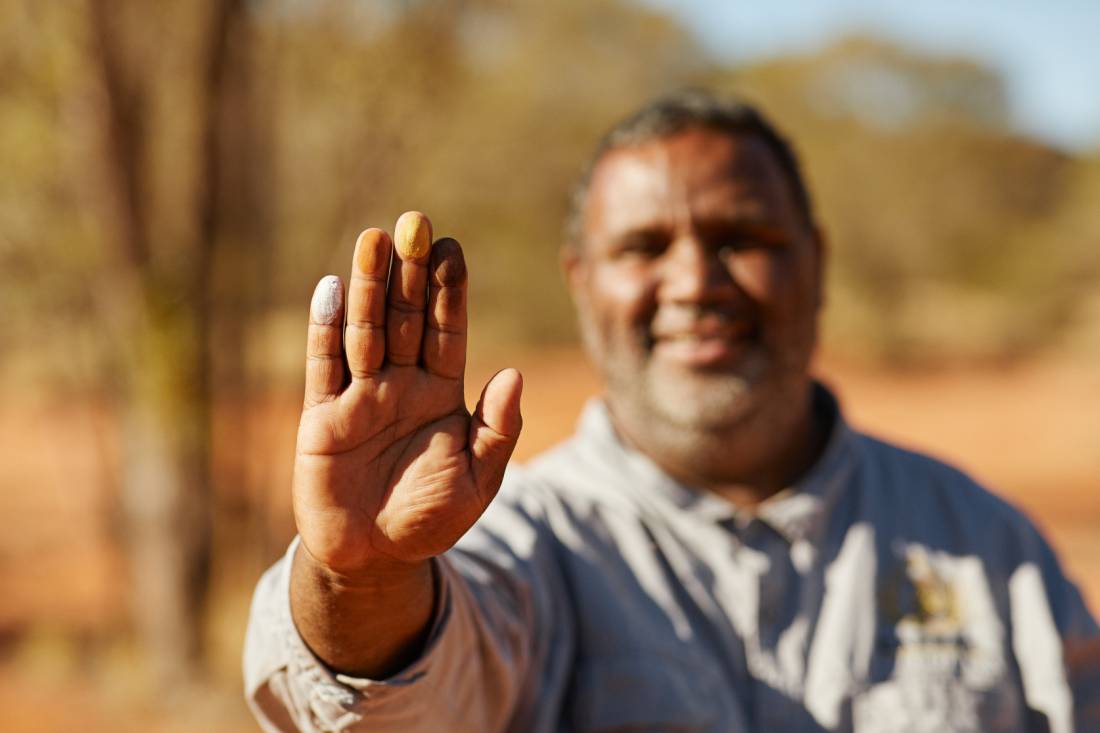
It was customary for men to dig the ochre, which became a significant commodity for trade with neighbouring nations and clans.
Along with the source of thousands of years of cultural connection and expression, ochre is believed to have a spiritual power that is released through ceremonial ritual.
You can also view one of the largest ochre deposits in Tasmania in the Cradle Mountain National Park or visit the vivid colours of the mineral ochre pits on the Larapinta Trail in the West MacDonnell Ranges.
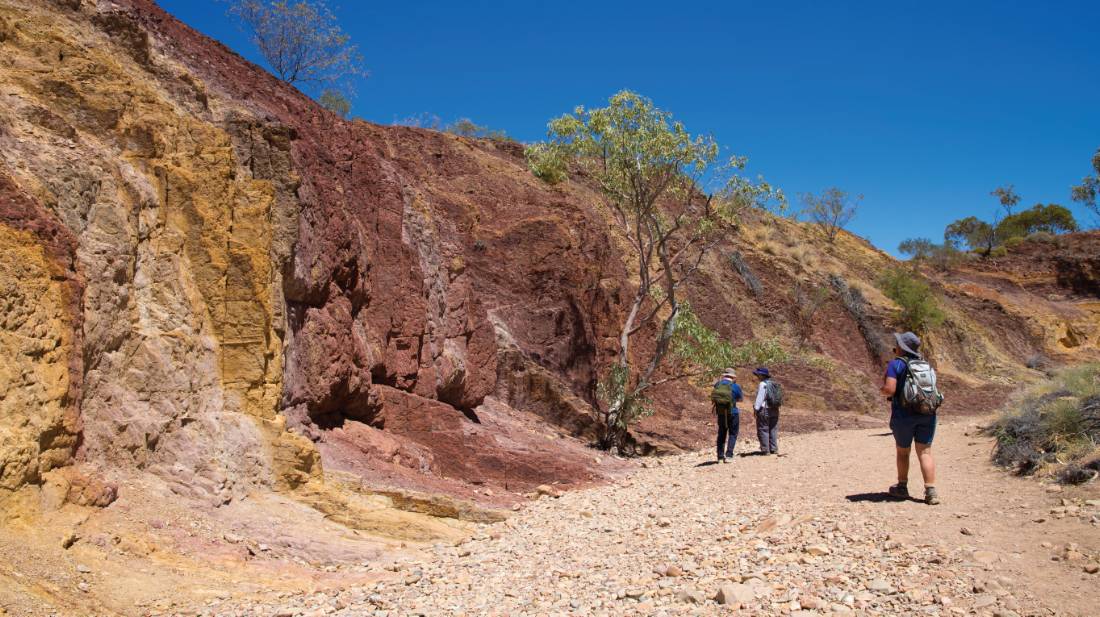
Connect with the land with a traditional Welcome to Country
A long tradition among Aboriginal Australian groups, a Welcome to Country serves not only as a greeting for visitors but as a symbol that signifies the recognition of Aboriginal and Torres Strait Islander peoples' presence in Australia.
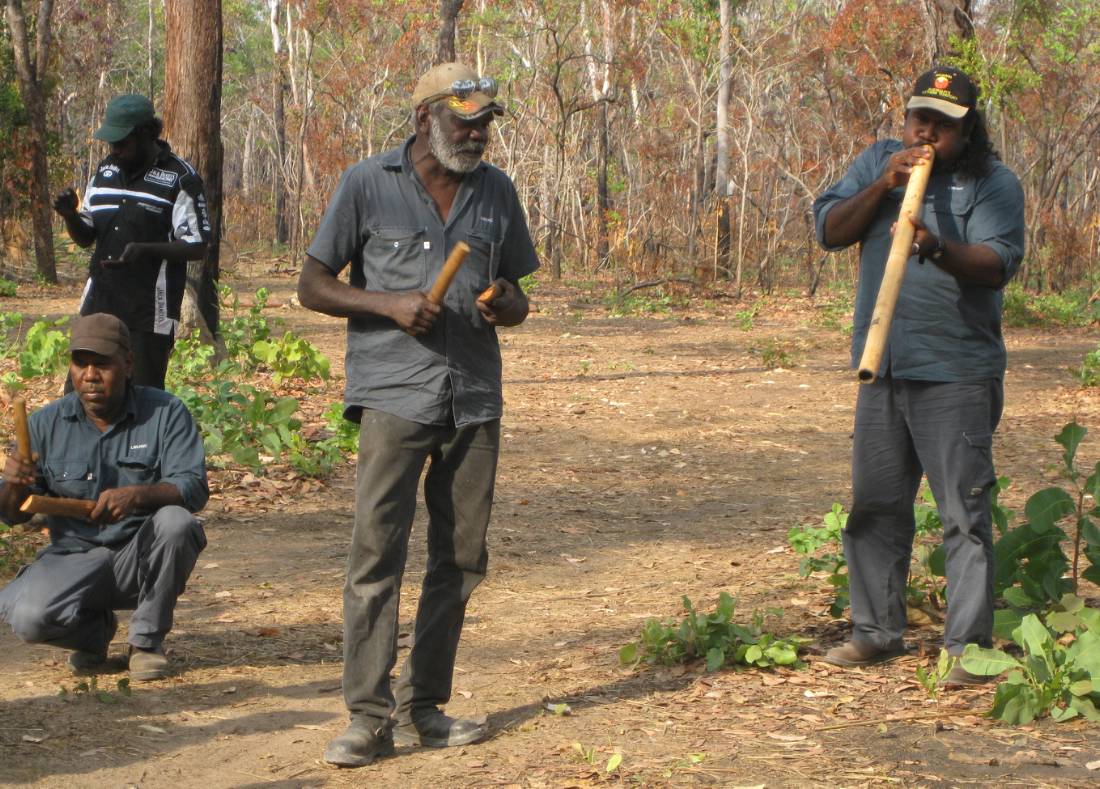
When exploring the ancient land of Kakadu National Park, our active itineraries include a meeting with Wulna Aboriginal elders for a traditional Welcome to Country.
It provides a significant introduction to the Aboriginal connection between both an ancient environment and a surviving and celebrated ancient culture that makes this region truly worthy of dual World Heritage listing.
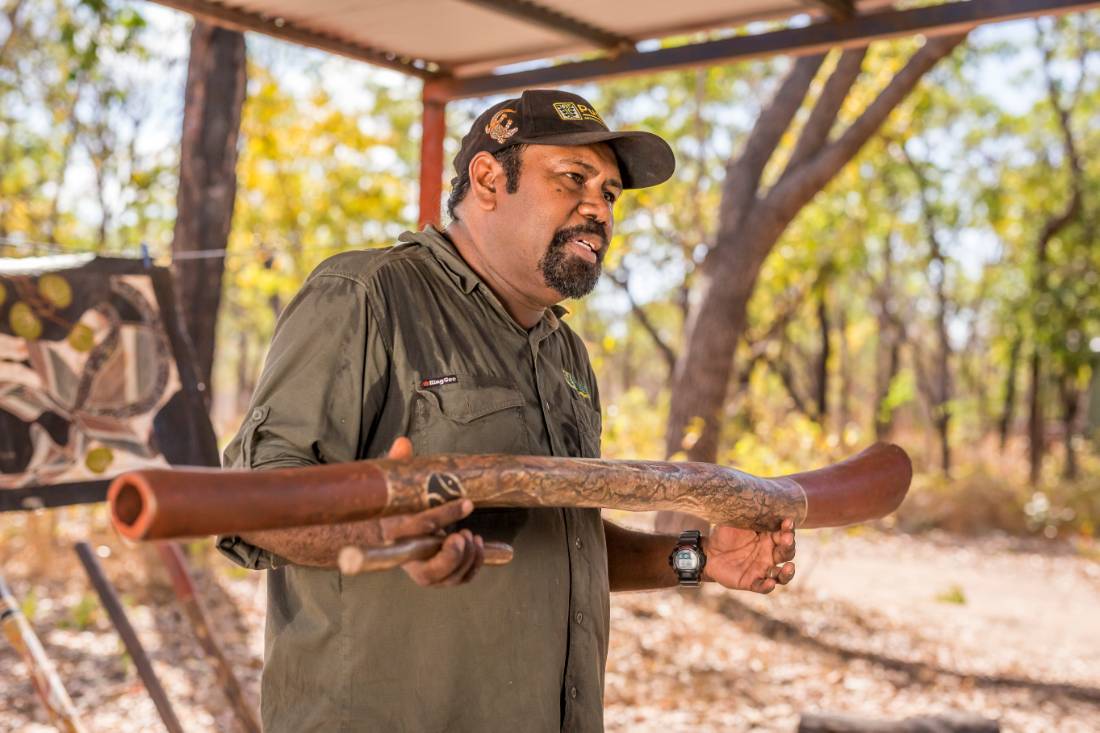
Better understand Indigenous Australian heritage on a cultural talk at Kings Canyon
Part of the climactic scenes that make up the ancient wonders of the Northern Territory is learning about the significance of each site visited.
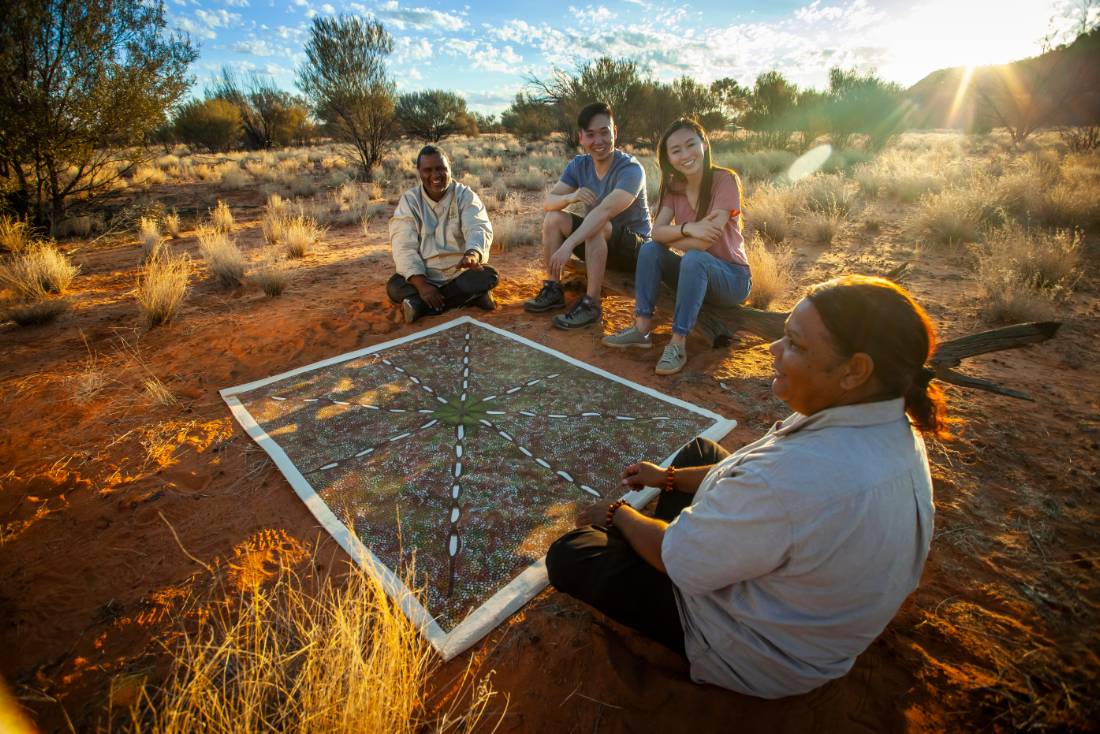
Working with the local Indigenous community of Wanmarra, we partnered with a small family-run business at Kings Canyon that aims to preserve and maintain Luritja and Pertame (Southern Aranda) language, cultural knowledge and heritage to empower the younger generations.
The Indigenous guests offer one of the most informative, professional and interactive cultural tours in the Red Centre.
The experience allows visitors to gain a deeper understanding of the need to conserve the Aboriginal cultures and respect their place and lifestyle in Australia, which time and time again proved to be a massive highlight for our travellers.
Visits to rock art at Uluru is also tied in with the tour, which is one of the few rock art sites open to the public in Central Australia.
Visit a tribal boundary in the Alum Cliffs State Reserve
Located in the north of Tasmania is the Alum Cliffs, a tribal boundary between three Aboriginal groups and a sacred celebration place.
The Aboriginal name for the area is Tulampanga and was a common meeting ground and trading location for clans. The place especially holds social and spiritual significance to Aborigines due to the ochre found nearby in the Gog Range area.
Along the enchanting short walk are wooden art features found to commemorate the area, including sculptures and outdoor furniture pieces – some created by local Aboriginal artists.
Engage in a smoking ceremony before exploring the ancient Takayna region
Another way of welcoming guests to Country is through a smoking ceremony where visitors gather around a smoky fire so that they are cleansed and protected from any dangerous or bad spirits in the land they will explore.
You can experience this on our Tarkine Explorer trip in the northwest of Tasmania, which is led by a Tasmanian Aboriginal Elder.
The ceremony also acts as a way of connecting with Country and culture by speaking to and acknowledging the ancestors, as well as aims to promote the good health and wellbeing of travellers.
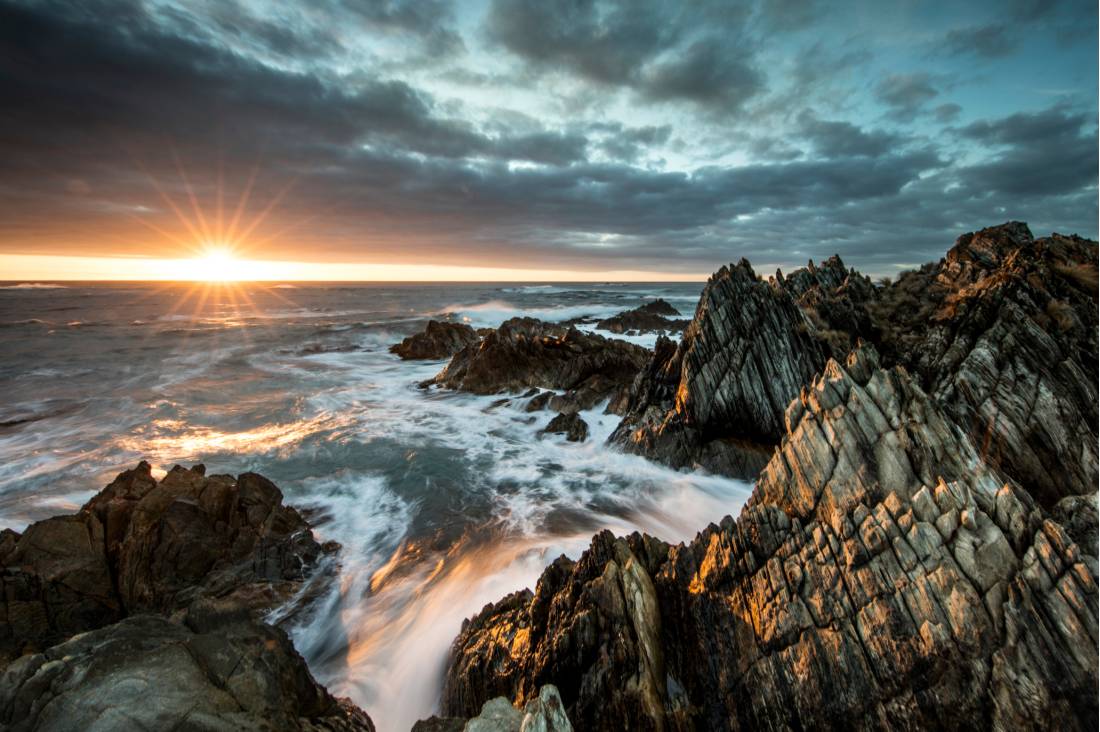
A cultural discussion ensues before the walk down to Sundown Point and onto the rugged and gnarly Tarkine coastline. Here is where you can find ancient petroglyphs and spectacular views of the Arthur Heads. There is also the opportunity to stop at a few places for bush tucker and further interpretations about the coastal living sites and protection of the area.
As part of our Thoughtful Travel charter, we work with First Nation communities to promote the education of cultural heritage. And, with our knowledgeable wilderness guides leading you through scenic and iconic trails across Australia, each of these indigenous experiences will add an extra layer of meaning and cultural awareness to your active outdoor adventure.
World Expeditions respectfully acknowledge the Traditional Owners of all of the areas that it operates in and thank them for sharing this beautiful land with us.